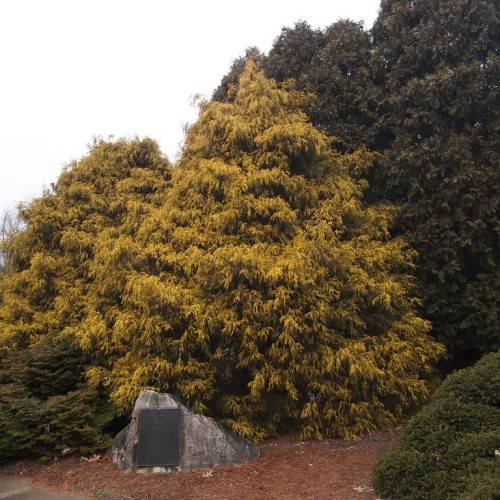
Japanese falsecypress
Chamaecyparis pisifera 'Golden Pincushion'
Also Known As - Japanese Falsecypress,Sawara Falsecypress,sawara cypressCycle:
Perennial
Watering:
Average
Hardiness Zone:
4
Flowers:
Flowers In Spring
Sun:
full sun,part shade
Fruits:
Fruits Ready In
Leaf:
Yes
Growth Rate:
Moderate
Maintenance:
Low
Care Level:
Moderate
watering
The Japanese falsecypress requires a moderate amount of watering. It is best to allow the soil to warm before watering and the plant should always be completely saturated. Try to water it once or twice a week, making sure that the soil never goes completely dry in between. In times of extreme heat it may need extra watering. Always avoid over-watering and make sure no water sits in the saucer or root area for long periods of time.
sunlight
Japanese falsecypress plants prefer full sun exposure, meaning that the area where it’s planted should get direct sunlight for at least 6 hours a day. In hotter climates, the best time to place Japanese falsecypress in a sunny spot is early morning when the sun is just beginning to rise and the temperatures are cooler. Conversely, in cooler climates, late afternoon is the best time to place in the sun. During the midday hours when the sun is at its brightest and hottest, the plant should be placed in a shaded area with indirect sunlight.
pruning
Pruning the Japanese falsecypress (Chamaecyparis pisifera 'Golden Pincushion') should take place twice a year, once in early spring before new growth begins and again in midsummer after it has finished flowering. During the pruning process, you should remove any broken, dead, or diseased branches and thin out any excess foliage that is competing for resources. Pruning should be done as much as necessary to maintain the size and shape of the tree without compromising its natural shape or health. Generally, this species should not be pruned too severely, as it tends to be a fairly slow-growing variety.
